How artificial intelligence, robotics could transform jobs in 10 years
Source: Russ Wiles
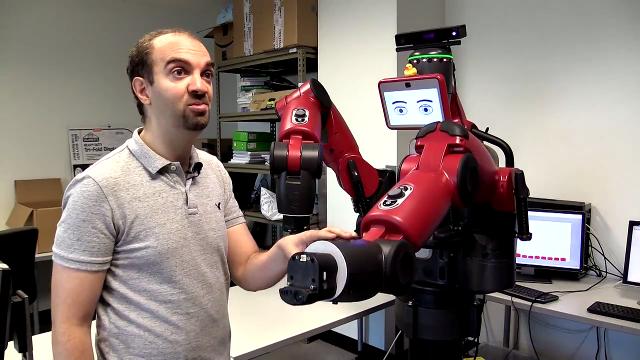 You might not be in your dream job. Most likely, you don't make as much money as you would like.
You might not be in your dream job. Most likely, you don't make as much money as you would like.
But let's face it: Today's employment market has improved substantially over the past several years. The nation already is nearly back to what economists call full employment, with a U.S. jobless rate easing to near 4 percent.
But that favorable trend masks a lot of pain, dislocation and disruption for people in certain occupations, with more coming. Robotics, artificial intelligence and other pressures are almost certain to alter the employment prospects for millions of Americans in the coming years, for better or worse. Here are some of the ways jobs and employment could change over the next five or 10 years:
Your co-worker: A robot
Robotics and automation already have made huge inroads, especially in manufacturing. Get ready for more changes ahead. Nearly half of American jobs, 47 percent, are at risk of being automated over the next two decades, according to a 2013 study by Oxford University's Department of Engineering.
The researchers examined more than 700 occupations, examining the tasks workers perform, the skills required and the engineering obstacles currently preventing computerization. Tasks less at risk are those requiring creative and social skills.
Jobs in transportation, logistics and office administration are at high risk for replacement. Driverless vehicles, including big trucks, already are on the highways. While robots mainly have been utilized so far in manufacturing, millions of service jobs could be next, according to the Oxford report. Automation in service industries could be more significant, given that the service sector has a lot more jobs than manufacturing and agriculture.

A recent Ball State University study listed a number of occupations at risk of being automated. Among them: telemarketers, insurance underwriters, tax-return preparers, watch repairers and people who type in data. By contrast, occupations with a low risk of displacement include recreational therapists, social workers, mechanic supervisors, health technicians and hearing-aid specialists.
Technological advances are a double-edged sword. They will wipe out some jobs but create others.
In retail, for example, automation has resulted in self-service cashier lanes. But the pending adoption of computerized reading glasses or goggles will give shoppers the ability to walk down grocery aisles and spot foods with certain traits such as those that are gluten-free or vegan, said John Challenger, CEO of outplacement-firm Challenger, Gray & Christmas. Other emerging products or apps will allow you to detect and identify desired products more easily with your smartphone.
“Some of these new technologies will ultimately create jobs," he said. "Workers with experience using augmented or virtual reality will see the most opportunities, as will those who can help guide customers in this new experience or train fellow staff."
A recent Ball State University study listed a number
A recent Ball State University study listed a number of occupations at risk of being automated. Among them: telemarketers, insurance underwriters, tax-return preparers, watch repairers and people who type in data. (Photo: Tom Tingle/Special for The Republic)
Robotics revolution
Eventually, the adoption of robots and automation will become national trends. But so far, especially for robots, the impact has been concentrated. The Brookings Institution recently mapped the prevalence of industrial robots and noted a heavy cluster in Midwestern states and those in the Upper South where the auto industry is focused.
More than half the nation’s 233,300 industrial robots are "burning welds, painting cars, assembling products, handling materials or packaging things in just 10 Midwestern and Southern states," the report said. Michigan alone has 12 percent of the nation's industrial robots, compared to 13 percent for all Western states combined. Ohio, Indiana and Tennessee also use robots extensively.
The increased use of industrial robots will eliminate some jobs, including dangerous, repetitive and physically demanding ones, but it could create new ones. In addition to engineers who will be needed to design these machines and technicians to maintain and program them, others eventually will work side by side with robots, said Heni Ben Amor, an assistant engineering professor at Arizona State University.
"In the past, there was a human/robot physical barrier because robots can be dangerous if you get hit by one," he said. "The new trend will bring the two worlds together."
For example, he said humans could do work requiring physical dexterity, such as attaching small screws, while robots do heavy lifting or more repetitive tasks.
Lingering unease
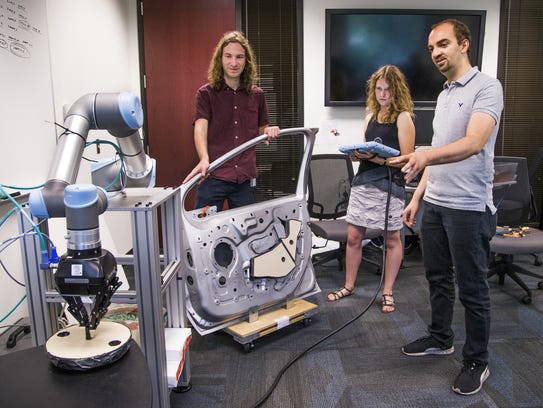
Arizona State University assistant professor of computer
Arizona State University assistant professor of computer science and robotics Heni Ben Amor, right, demonstrates a manufacturing robot with Ph.D. student Kevin Luck, left, and visiting molecular medicine scientist Tamara Blätte, at the Interactive Robotics Lab at ASU, Wednesday, August 30, 2017. (Photo: Tom Tingle/The Republic)
Ben Amor said he's excited about the potential for job gains with advances in robotics. "It's going to create way more jobs than the number lost," he predicted.
Ben Amor considers driverless vehicles to fall under the banner of robotics, as both involve machines or systems perceiving changes in the environment and taking actions in response. He believes Arizona could have a bright future in the development of driverless cars and trucks, given that Uber, Alphabet, General Motors and Intel all have tested such vehicles on public roads around the Valley.
The unusual concentration of tests here has attracted the attention of a lot of smart students and young entrepreneurs who want to work for those companies or start their own, he said.
Still, the adoption of robots and artificial intelligence often causes public anxiety over job losses. This anxiety spills over into politics. "It is telling that the robot incidence in red states that voted for President Trump in November is more than twice that in the blue states that voted for Hillary Clinton," Brookings noted in its report.
While Arizona has fewer robots and thus less robot-induced anxiety, the state lags in other respects affecting jobs, prosperity and employment.
For example, Arizona has a higher proportion of low-wage jobs, 27.8 percent, than the 24.2 percent national average, according to a report by Prosperity Now. The average pay of $49,700 in Arizona runs about $3,200 below the U.S. average, and a slightly smaller percentage of local employers offer health insurance to their workers.
Jobs remain, but education needed
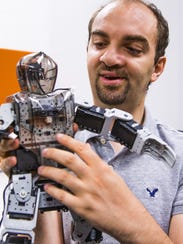
Arizona State University assistant professor of computer
Arizona State University assistant professor of computer science and robotics Heni Ben Amor, talks about robots and how they are affecting employment in the United States. (Photo: Tom Tingle/The Republic)
The pressures from robots, artificial intelligence and global outsourcing are serious, but the outlook isn't entirely bleak. The nation's economy is robust, resilient and innovative. New jobs will be created in new industries, as has regularly occurred in the past.
A recent study by the Georgetown Center on Education and the Workforce estimates that there are still 30 million "good jobs" out there for workers who lack college degrees. Such jobs offer median or midpoint annual pay of $55,000 (and a minimum of $35,000). Many are found in health care, finance and information technology.
Such positions have steadily replaced formerly good jobs in traditional blue-collar industries. For example, 25 years ago a machinist making $44,000 exemplified a good manufacturing job. Today, that description applies to a computer-support technician earning $60,000 a year. Other examples of good jobs cited in the report include financial managers, sales representatives and engineering technicians.
Still, the study noted that the educational requirements for good jobs are rising. While college degrees aren't required, some higher education usually is. For workers with no more than a high school diploma, the number of good jobs has dropped by more than 1 million since 1991. By contrast, the number of good jobs for workers with an associate's degree has climbed by 3 million over that span.
"To compete effectively, workers need some level of post-secondary education and training," the report said. "In addition, a variety of non-degree credentials are sometimes necessary to get those jobs, or to advance in them."
Reviving trade jobs
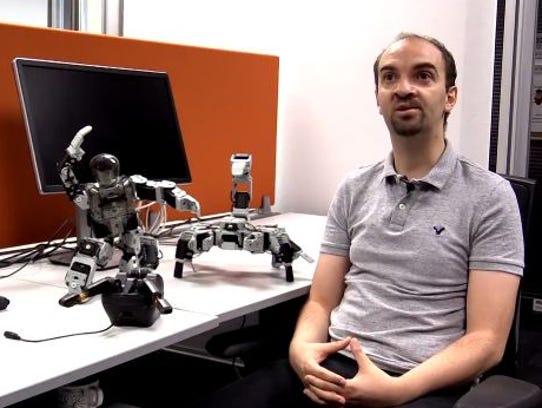
Assistant Professor at Arizona State University Heni
Assistant Professor at Arizona State University Heni Ben Amor discusses robotics, artificial intelligence and other pressures that are almost certain to alter employment prospects for millions of Americans in the coming years on Thursday, Aug. 31, 2017. (Photo: Tom Tingle/The Republic)
Higher education is important, but many well-paying jobs don't require time spent in college classrooms. An estimated 10,000 or more unfilled jobs are in Arizona's construction trades — plumbers, electricians, dry-wall specialists, carpenters and others.
The Brewer Companies, a large Phoenix plumbing company that includes Benjamin Franklin Plumbing on the retail side, is having such a hard time attracting workers that it has slowed its growth so that customer service and quality don't suffer. Brewer, which is looking for candidates to fill 35 open positions, could have grown at least 15 percent this year, said the company's CEO, Mike Brewer.
Brewer offers paid apprenticeships for people wanting to become plumbers. Prior experience isn't needed, but applicants must be responsible and eager to work. "Will these people show up on time and work all day?" he asked. "It's not rocket science."
Promising, doomed occupations
Factors other than robotics, foreign competition and education affect jobs. So do industry strengths or weaknesses, customer demand and more.
Kiplinger.com recently sorted through 785 occupations to glean what it considers the 10 best and worst, based on current average pay and future growth prospects.
The 10 best are focused on technology and health care. In the tech field, promising positions include app developers and computer-systems analysts, while the health sector offers bright outlooks for nurse practitioners, physical therapists, health-services managers, physician assistants, dental hygienists and speech-language pathologists. Rounding out Kiplinger's top 10 are market-research analysts and financial advisers.
The worst occupations are more varied but include many manufacturing positions such as textile-machine workers, photo processors, furniture finishers, metal/plastic machine operators and print binding/finishing workers. Robotics along with general technical obsolescence are dooming some of these jobs.
Other positions with poor prospects, partly because they are highly competitive or offer low pay, include radio/TV announcers, legislators, floral designers, gaming cashiers and door-to-door salespeople, according to Kiplinger.
STEM jobs — those in science, technology, engineering or math — enjoy especially good prospects. "The jobs of the future, no matter the industry or level, are no doubt going to involve at least a rudimentary knowledge of technology," said Challenger. People who enter a STEM profession will have a leg up on the competition, he added.
Top STEM-focused jobs cited by his company for 2017 include computer-system analysts, statisticians, software developers, mathematicians and financial advisers. Median salaries in each of those fields already top $80,000, with unemployment rates below 2.5 percent.
Nearly half of American jobs, 47 percent, are at risk
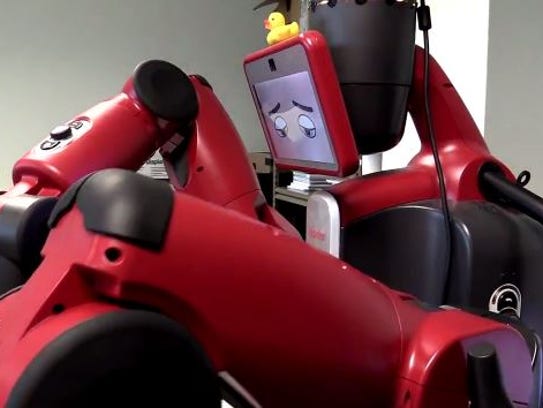
Nearly half of American jobs, 47 percent, are at risk of being automated over the next two decades, according to a 2013 study by Oxford University's Department of Engineering. (Photo: Tom TIngle/The Republic)
Part-time work: An expanding option?
The assumption is that most people want full-time jobs with a range of benefits, but that's not necessarily so. In fact, more than one in six U.S. workers currently labor part-time, and many of these people do so from home.
A part-time, remote job can be ideal for working parents, semi-retirees, individuals with health issues, military spouses and career changers, said Sara Sutton Fell, CEO of FlexJobs, a job-search website.
Companies of all sizes and across a range of industries hire part-time, remote workers, she noted, citing nurses, accountants and digital-marketing strategists as examples. So too for tutors, writers and editors, computer coders, interpreters and customer-service representatives.
With so many baby boomers in good health, part-time jobs remain an attractive option for young retirees — a way to remain socially engaged while generating extra income. In fact, 79 percent of workers polled recently by the Employee Benefit Research Institute said they plan to work for pay in retirement. However, just 29 percent of retirees, in the same poll, said they actually work or have worked for pay.
This survey has consistently found a wide gap between the expectations of current workers to stay employed and the proportion of retirees who are. But with looming job shortages in some occupations and increasing employer flexibility, part-time work for retirees might be more feasible in coming years.
| }
|